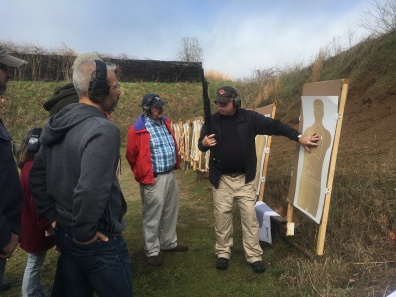
“I’m not interested in selling you a fear-based approach to self defense.”
Paul Sharp
Imagine my excitement when I read on Instagram that the one and only Paul Sharp of Straight Blast Gym and Sharp Defense fame would be coming to Athens, GA to put on an 8-hour version of his MDOC coursework.
The two day, eight hour seminar was hosted at Straight Blast Gym, Athens. Even though the seminar was intended only for the SBG tribe, I was able to beg my way in by asking nicely and producing a credit card.
Paul is on my short list of trainers who I will do everything in my power to train with when they travel to the Atlanta area.
What is a Multidisciplinary Optimization Course (MDOC)?
Since I don’t have Paul’s definition available, I’ll take the liberty to attempt a summary. MDOC teaches the student to navigate the initial criminal-interview process, weather a physical clash (either preemptively or defensively), gain control of the opponent, and then disengage or neutralize as needed. The physical skills taught use a streamlined MMA (mixed martial arts) delivery system that are robust enough to work even in a weapons based environment (knives and guns) with multiple opponents in play.

This was an interesting course for me to take because of the students. All of the other students in the course were members of SBG Athens. They all had varying levels of BJJ, Judo, and MMA with minimal formal firearms training. The situation is usually reversed when I’ve seen this material in the past. There are usually lots of gun folks. It changed the dynamic of the course.
Going into the course, I was curious to see how Paul would tailor the course to the student base, and how the students would integrate their existing skillsets with the more ‘street’ oriented material. I think they all did a great job, and I saw a lot of lightbulb moments for the students.
“This bad guy is a black-belt in getting what he wants using his verbal skills and victim selection skills. Don’t get pulled into his game.”
Topics:
- Discussion of how bad guys do business
- How do we deselect ourselves? How do we fail the criminal interview process?
- Managing Unknown Contacts (talking to people we don’t know in public)
- Preemptive striking to seize the initiative
- A default defensive position into…
- A boxing blast, a clinch (standing grapple) to a position of control…
- A few strikes and throws from control positions
- Dealing with two attackers at once using the control positions
- Impact weapon defense (once the knife has already stuck you/worst case)
- Firearm defense at contact distance
- Working off of a wall (no maneuver room)
- Putting it all together

Things I took from the Course
I’ve seen this material in various packagings from Paul and the Shivworks Collective since 2010. So the material was a good refresher, but it wasn’t novel for me. That said, I got a lot of teaching points and tidbits from Paul’s presentation that will be useful for me going forward. Most are points that Paul brought up, and some are my comments when hearing Paul’s lecture. I’ll list a few key points.
- Mindset Lectures are the depressing (and necessary) dark side of the self-defense world. It’s possible to get students to grasp the ‘mindset’ side without dwelling on negativity. What are you willing to fight for?
- It’s not about who’s in front of you (the bad guy), but who is behind you (your family, friends, and getting home to them). So don’t focus as much on fear of the bad guys, but love for your people. It’s healthier.
- In polite-society, we have trouble being assertive and appearing to be rude. Practice and repetition make you better at it. It’s OK to be rude.
- If you have a base in sports grappling and striking, all you need to do is ‘throw some dirt into your game’ and you’ll win most fights.
- Give the bad guys credit. They are running a calculus of benefit/cost of interacting with you. They also suffer the same physiological effects when preparing to spring their ambush (pre assault cues). Learn them and you can see a problem before it materializes.
- Sports MMA people have the skillset to survive in the gym, why wouldn’t that apply in a street context?
- Words mean things. Saying, “I’m Sorry” is bad if you don’t mean it. Try instead, “I apologize”. Placate an aggressor, but don’t completely relent to their dominance.
- Posture and Body Language is a critical selection criteria. Own the ground you walk on. You only have to look like a hard target for a few passing seconds to fail the selection process.
- Children abduction point: Teach kids to scream “This isn’t my dad/mom!” to draw attention. Teach your kids to listen to their gut. Don’t ignore when a child recoils from a certain person. Don’t tell them to ‘be nice’. Instead, shrug your shoulders and say “kids will be kids”, and keep an eye on that person. They haven’t yet had their innate danger alarm suppressed.Recommended Reading from Paul:
The Gift of Fear and Protecting the Gift
Thank you to Rory and Adam Singer of SBG, and all the students for welcoming in the outsider and making me feel like part of the tribe.
If you’d like to train with Paul, his email is straightblastgymillinois@gmail.com
If you find value in my posts, please consider subscribing and sharing. And please do your Amazon shopping through our affiliate link.
















